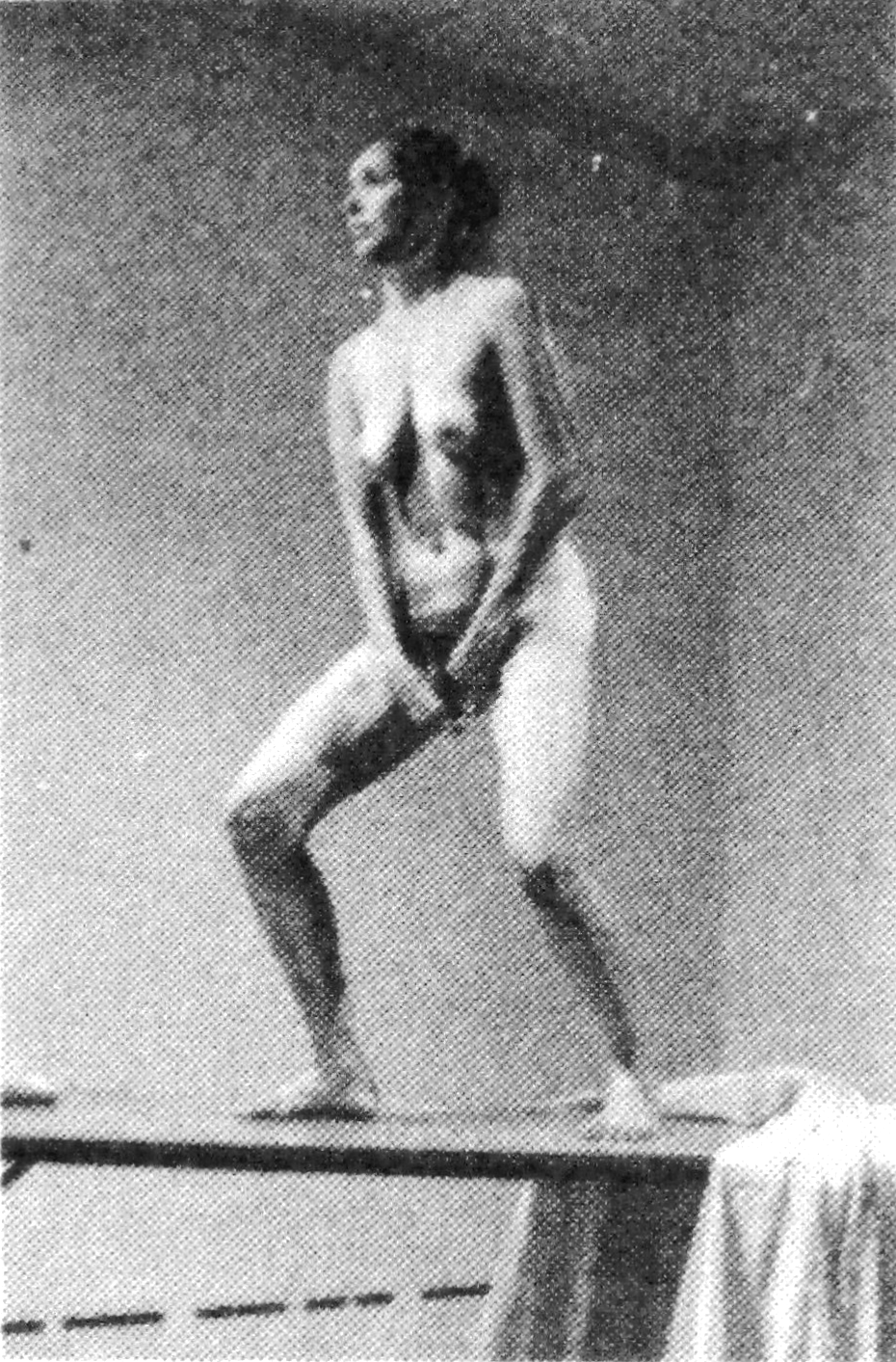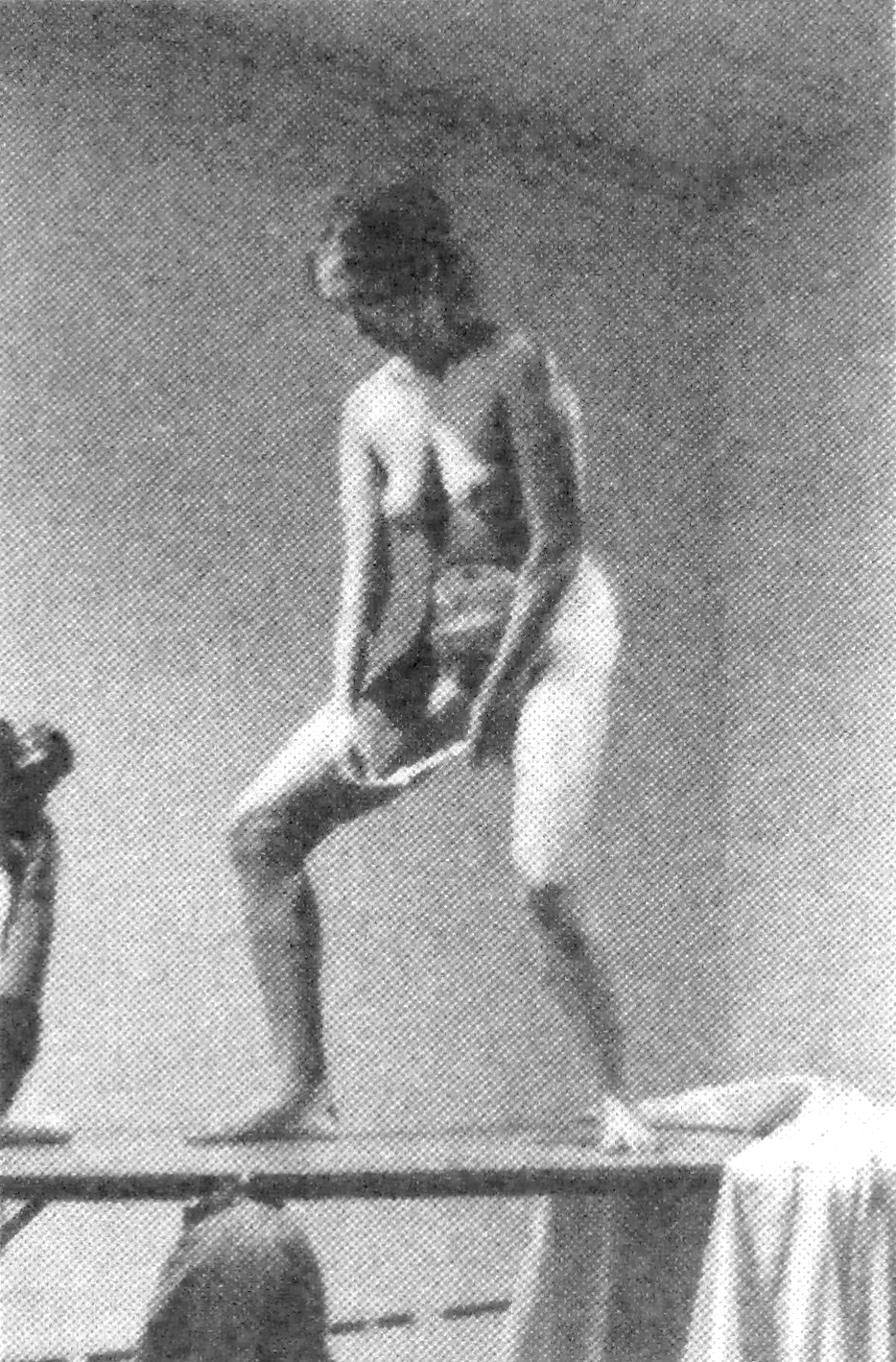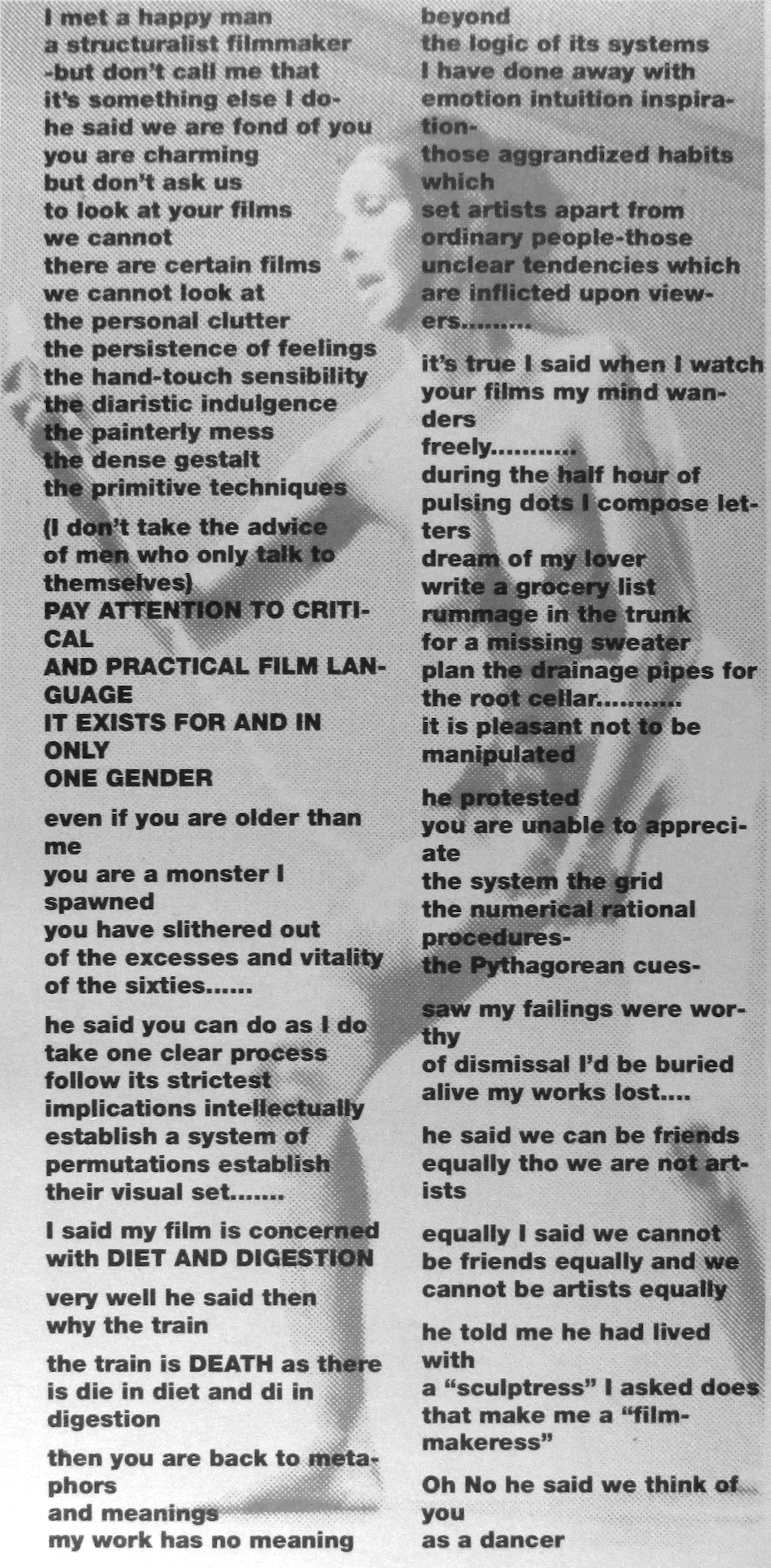William Peterson: How do you usually work with your dreams?
Do you usually let them integrate themselves into the work or do you ever try anything more systematic with your dreams like keeping a journal?
Do you usually let them integrate themselves into the work or do you ever try anything more systematic with your dreams like keeping a journal?
Carolee Schneemann: Well the dreams use me. I'm not interested in dreams as such. I pay attention to them but most dreams sort nonsense and debris like an electric system that has to keep clarifying its own information and charges. When the dream is really persistent, when the dream presents a lot of images then I'd rather… It's a combination of being rather eager and reluctant—I mean I would just like to feel that things are going on in a more rational, projectile way and then these dreams begin to settle in and occupy a territory between conscious and unconscious that's very full, that's very fixed. That's how most of my work comes. Meat Joy starting way back then (1964)—that was a received dream initially, the whole sense of synergy, the initial images. So that's why these two guys are here [referring to her two kittens].
WP: Is there much difference in the way your static work evolves compared with your performance work as far as the process is concerned?
CS: Some of the installations evolve from dream information—or that area where the mind is very permeable and fluid so that a kinesthetic, synthetic motive or provocation begins to attract certain materials to me.
WP: William Burroughs has said that sometimes he uses dreams from beginning to end in his work. Do you ever do that?
CS: Fresh Blood-A Dream Morphology, for example. That completely follows a dream from beginning to end. It started first as a morphological research. In this dream two persistent attributes or two essential objects remained from the dream: an umbrella with which I had accidentally pierced a man's thigh, inducing spurts of blood; and a bouquet of dried leaves that had little doll's heads tucked in it. Because I had started to menstruate, I woke up remembering the dream. It had a funny narrative. I had no money at the time. I was having trouble doing any work at all. I was so broke I thought I'll concentrate on this dream and perhaps it will lead to something. As I started to draw the umbrella and the dried leaves, the dream composed a question: "What do these two objects have in common?" As I drew them I saw what they both had in common was a V-shape.
The umbrella formed a triangular V with its stem below, land the bouquet of leaves formed in inverted pyramid, with stems below. I looked at it and thought, well that's Va basic vulva shape. V for "vulva". V for "victory". So I went to the dictionary and got all the words with "V's" but and put them all on cards. "Velocity", "vortex", "vector'", "virago" just a whole "vocabulary". Then research began in science books on organic forms, natural forms and I photographed sets of micro and macro branching patterns ranging from leaf cells to surface tensegrity. I collated a "vocabulary" of sacred artifacts that had to do with mandalas, sacred "V" forms, and found a sacred Tantric umbrella! A sacred tantric tree, a pyramid shape with a stem on the end, crisscrossed with little squares that are cut into it and each square has a calligraphic stroke which is a part of a mantra which means "sacred vulva, sacred vulva, sacred vulva"… I organized this "vector vocabulary" with its morphological relays on to cards, and formed them into four units so that each card combined four photographs. Four cards composed page, including a unit "V" from science/nature, one from sacred artifacts, one a drawing—say of figures demonstrating velocity and another from a popular culture source (Busby Berkeley etc.). These pages consisting of the four units of various vectors were then photographed as a slide relay to accompany the dream and a feminist analysis of its themes.
• • •

?
CS: Interior Scroll: people are just as confused and upset about it as when I did it. When I did it I felt that I definitely didn't want to do it. It was a dream image again. I woke up and had this old image of a figure I drew it right away as I saw it in the dream-pulling this coil out of its vagina and the message of the dream was the value of interior knowledge, that everything I've ever done and everything I've ever known comes through my erotic self and this was to absolutely emphasize that and position it physically. So that was just a drawing and then I wrote about it and the writing about it is my book More Meat Joy I think that's a really wonderful piece in which phallic space is diverted and inverted. It posits a perceptual possibility of analyzing space in terms of vulvic space so that everything becomes an impress of what the generative inside is rather than being sort of absence, a hollow impression of phallic determination. I write about vulvic space as being the impress, the mold, the structure, the construction of form and I take it in to all forms; I just invert the overtness of phallocentric analysis of objects and form. So the problem of this little drawing. I was asked to do something at a conference of women artists at a summer event in Easthampton. I said well, I'll read something, I'll paint something and there was like this monkey on my back saying, "you have to enact the drawing." "Go away. Leave me alone. I'm here on vacation; I'm here to have fun." And the next thing I knew I was folding up these little strips of paper, folding them into accordion shapes, and writing a message on them. So I said to my companion, "You have to help me, you have to show me how this works. You have to help me stuff all this inside." And it hurt, like all the edges were cutting so we got out a lot of cold cream. We folded up the narrative it was like a Japanese origami exercise we folded it all up because in the drawing the strip was this long. Indicating arm's length. I said somehow I have to get something that long inside. And that was real hard and not only that, I had written in ink so that when pulled it out it all ran. And I knew that since I had that image I had to make it work and that it should be this wonderful kind of thread of knowledge that was going to be emerging. So I went to the typewriter and I could fit in like six letters per line on the folding of the strip. And I was petrified. I'm nearsighted and I can't perform with lenses on because if I see the people then I'm really petrified. So being very nearsighted gives me a certain audacity because I never know exactly who's out there and I can concentrate on whatever it is I have to do.

Positioned on a high table in front of the audience, a sequence of physical actions evolve momentum for revealing the scroll. People were just flabbergasted, stunned, horrified, ecstatic. And a banker who was a close friend, living out blips of the psyche about power and manipulation and keeping control, whose whole sexual life was a tangled source of confessions, was deeply affected. Sex for him was very confused and mixed up with dominance, power, control.

And so yielding, dissolving, sensitivity and female erotic experience was tainted and destructive for him; he loses power if he identified with that aspect of himself. He was in a bliss over this piece, said, "I finally understand the ticker-tape! I finally understand the transparence of the direction of all my life!" It's the umbilicus, it's the rain-bow, it's the ticker-tape, it's the unfolding, the secrets that should be revealed because then you get to real secrets rather than the degraded ones.
Text of "Interior Scroll"
I met a happy man
a structuralist filmmaker
-- but don't call me that
it's something else I do --
he said we are fond of you
you are charming
but don't ask us
to look at your films
we cannot
there are certain films
we cannot look at
the personal clutter
the persistence of feelings
the hand-touch sensibility
the diaristic indulgence
the painterly mess
the dense gestalt
the primitive techniques
(I don't take the advice
of men who only talk to
themselves)
PAY ATTENTION TO CRITICAL
AND PRACTICAL FILM LANGUAGE
IT EXISTS FOR AND IN ONLY
ONE GENDER
even if you are older than me
you are a monster I spawned
you have slithered out
of the excesses and vitality
of the sixties...
he said you can do as I do
take one clear process
follow its strictest
implications intellectually
establish a system of
permutations establish
their visual set...
I said my film is concerned
with DIET AND DIGESTION
very well he said then
why the train
the train is DEATH as there
is die in diet and di in
digestion
then you are back to metaphors
and meanings
my work has no meaning beyond
the logic of its systems
I have done away with emotion
intuition inspiration spontaneity --
those aggrandized habits which
set artists apart from
ordinary people - those
unclear tendencies which
are inflicted upon viewers...
it's true I said when I watch
your films my mind wanders
freely during the half hour of
pulsing dots I compose letters
dream of my lover
write a grocery list
rummage in the trunk
for a missing sweater
plan the drainage pipes for
the root cellar...
it is pleasant not to be
manipulated
he protested
you are unable to appreciate
the system the grid
the numerical rational
procedures --
the Pythagorean cues --
i saw my failings were worthy
of dismissal I'd be buried
alive my works lost....
he said we can be friends
equally tho we are not artists
equally I said we cannot
be friends equally and we
cannot be artists equally
he told me he had lived with
a “sculptress” I asked does
that make me a “film-makeress”
Oh No he said we think of you
as a dancer

WP: Do you know Karen Finley’s work? Have you talked with her about the way she uses her body in her work?
CS: We meet on the street corner by accident and we have a few words. Her work is different and it has another strand that's very connected to mine but mine comes out [of a lack of repression and hers comes out of this very Catholic, ferocious dynamic to assault and confront and break free. So mine always seems a little sloppy to repressed people because it's coming out of something which I call my farm-girl background. "Hey, you know, c'mon, look, this is real simple; this should be obvious; what's the problem?"
• • •
CS: Some people turn away when they see me. It is one reason why I might lose a decent job.
WP: What do you mean?
CS: Well, they think I'm going to run around naked, that I'll be sitting in my office doing something obscene when the students come in to consult about their projects. I remember a critic, an historian, that did a panel on gender in which the body was totally obfuscated. She said. "Yes, I understand that your project has been this work with the body." Project, it's not a project, it's a life process! So, even the terminology just kills you; it drives you into the wrong garage. [laughter] "Project!" I don't park there.